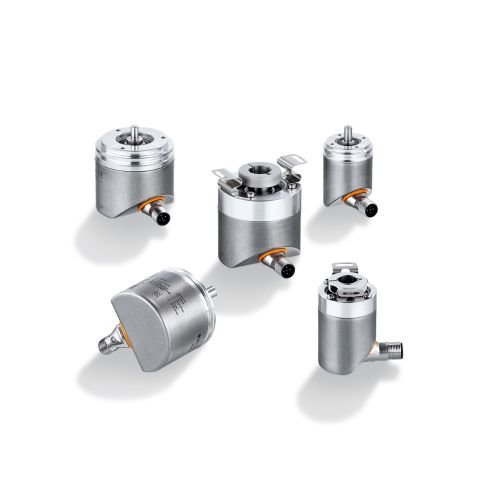Motion control sensors are also called rotary encoders or position sensors. They detect the movement of any nearby object and send an electrical signal to the detector that converts it into a readable signal for digital devices. Motion control sensors effectively and accurately detect the nearby object’s angular mechanical position. This enables the operator to find out the rotational mechanical displacements. Rotary encoders are also helpful in regulating and controlling outputs such as position, speed, volume control, and frequency.
Types of Motion Control Sensors
Rotary Encoders
Rotary encoders, also called shaft encoders, are electromechanical sensors that monitor the position of the axle or shaft and then transfer it back digitally. Rotatory encoders are commonly utilized in automation applications that need precise shaft unlimited rotation.
Linear Transducers
Linear transducers commonly measure movement in a straight line. They effectively convert displacement into an electrical signal, which is proportional to the amount of displacement. These sensors are usually used in applications where accuracy is of concern and in harsh, very harsh cold environmental conditions.
Magnetic Pickups
Magnetic pickups are motion sensors that effectively sense the speed of a moving part. This motion is quickly detected by the magnetic field that has a measurable alternating current voltage. These sensors are mainly used as parts of tachometers or speedometers, which are integral components of industrial equipment and engines.
Linear Variable Differential Transformer (LVDT)
LVDT is designed to measure linear displacement accurately. There are various types of these sensors. Each consists of different armatures, temperature ranges, built-in electronics, and stroke lengths and has been mainly designed to measure more than one target. You can use them in various industrial applications because they are modified to complete various sensing tasks.
Incremental Encoder
Incremental encoders give a specific number of pulses per revolution and measure how much linear and angular displacement has occurred. Every time you turn the encoder on, it will start from zero regardless of where the shaft is and measure the shaft to a specific reference point.
Absolute Encoder
An absolute encoder is a device that assigns every angular position of every revolution a numerical value. This makes it easier to measure the exact mechanical angular displacement. Even when powered off, the encoder will give precise position values after turning it on.
Applications of Motion Control Sensors
Motion control sensors and the subtypes of sensors are popularly used in many industrial settings where the rotation of shafts or motion of moving parts is required to be accurately set and measured to ensure the efficient operation of a factory process. Motion control feedback can be crucial to prevent any machinery breakdown in the following industries:
- Automation & Control
- Assembly Lines
- Extraction Technology
- Marine Technology
- Aerospace industry
- Automotive industry
- Measurement & Testing
- Robotics.

